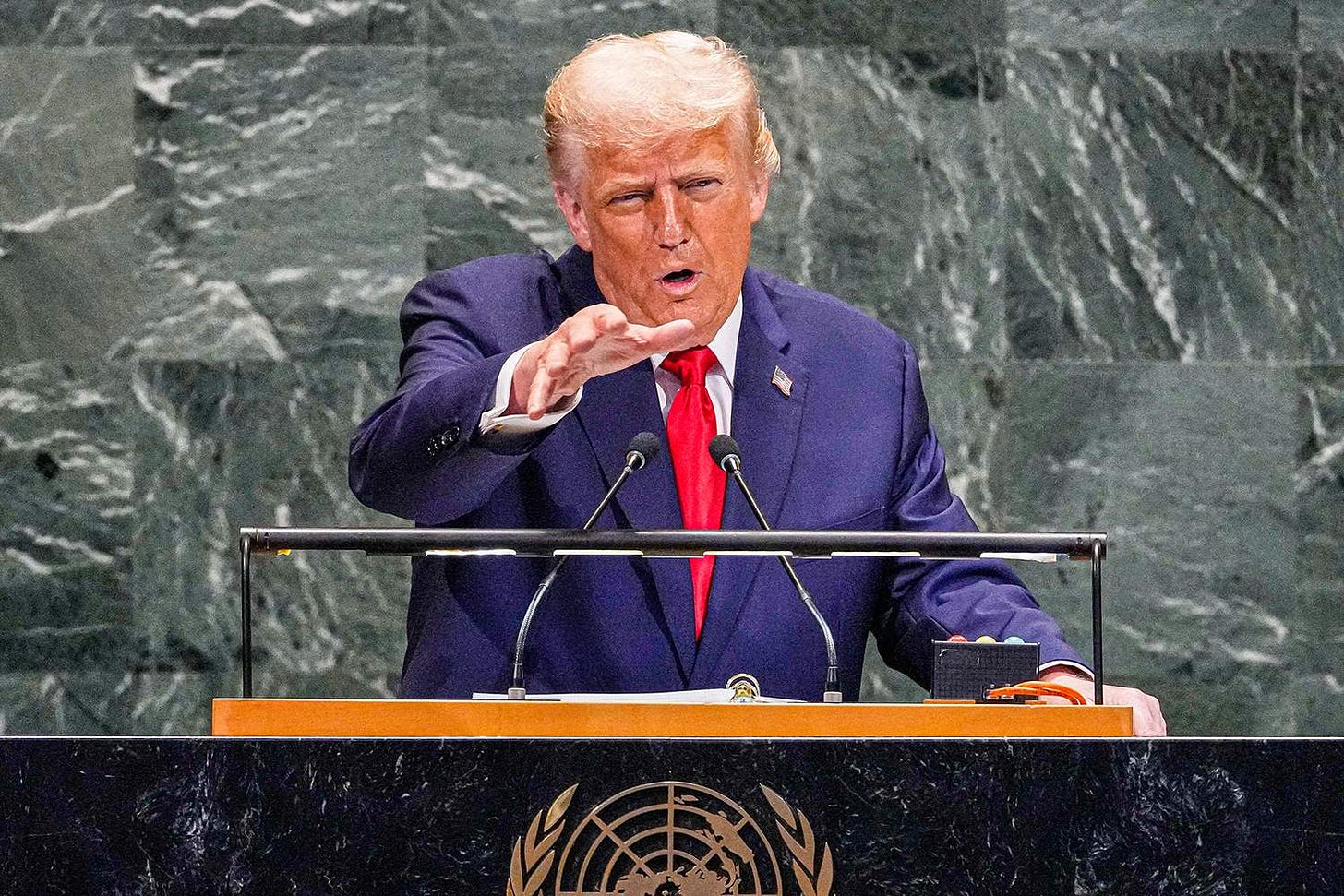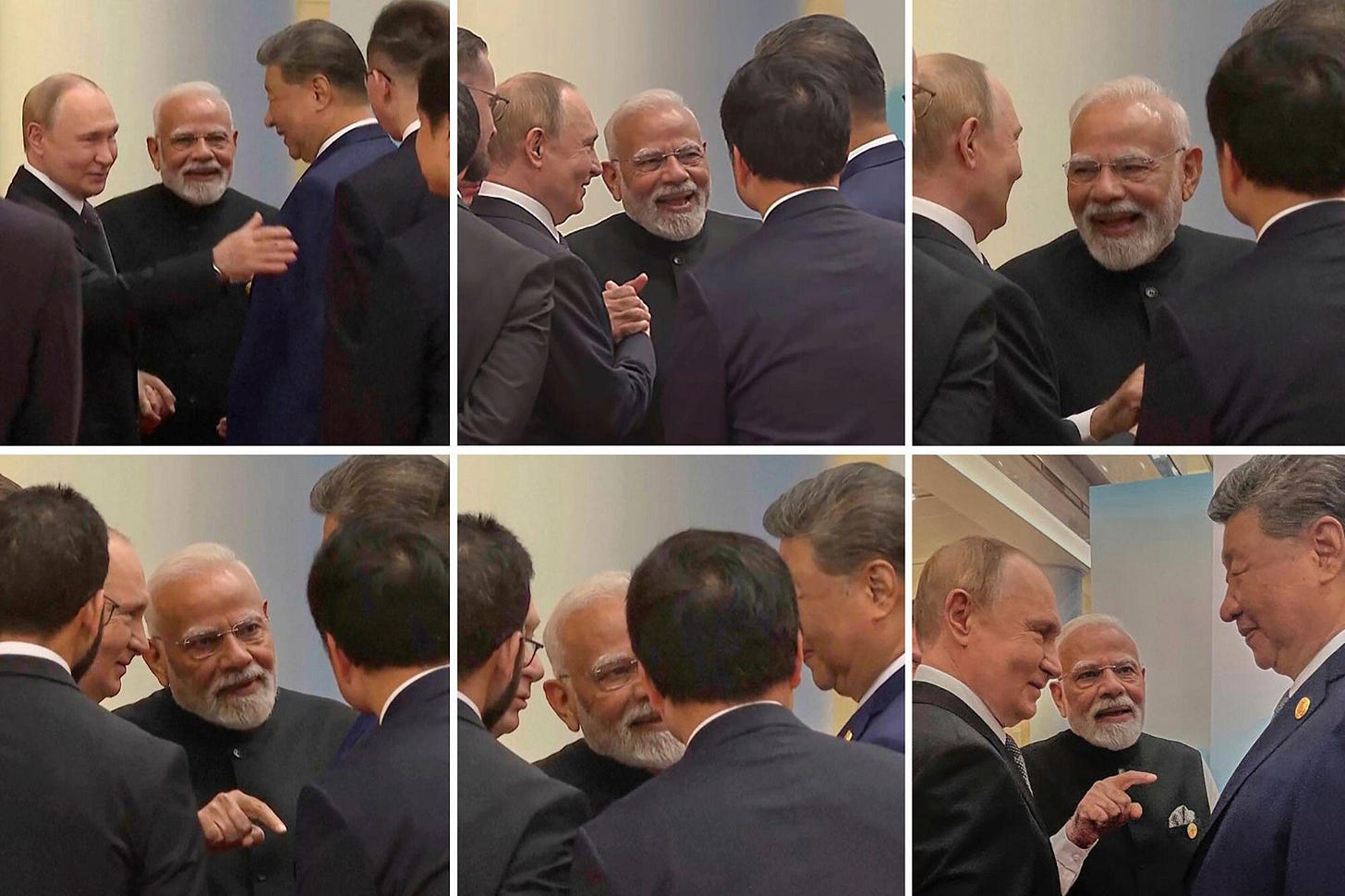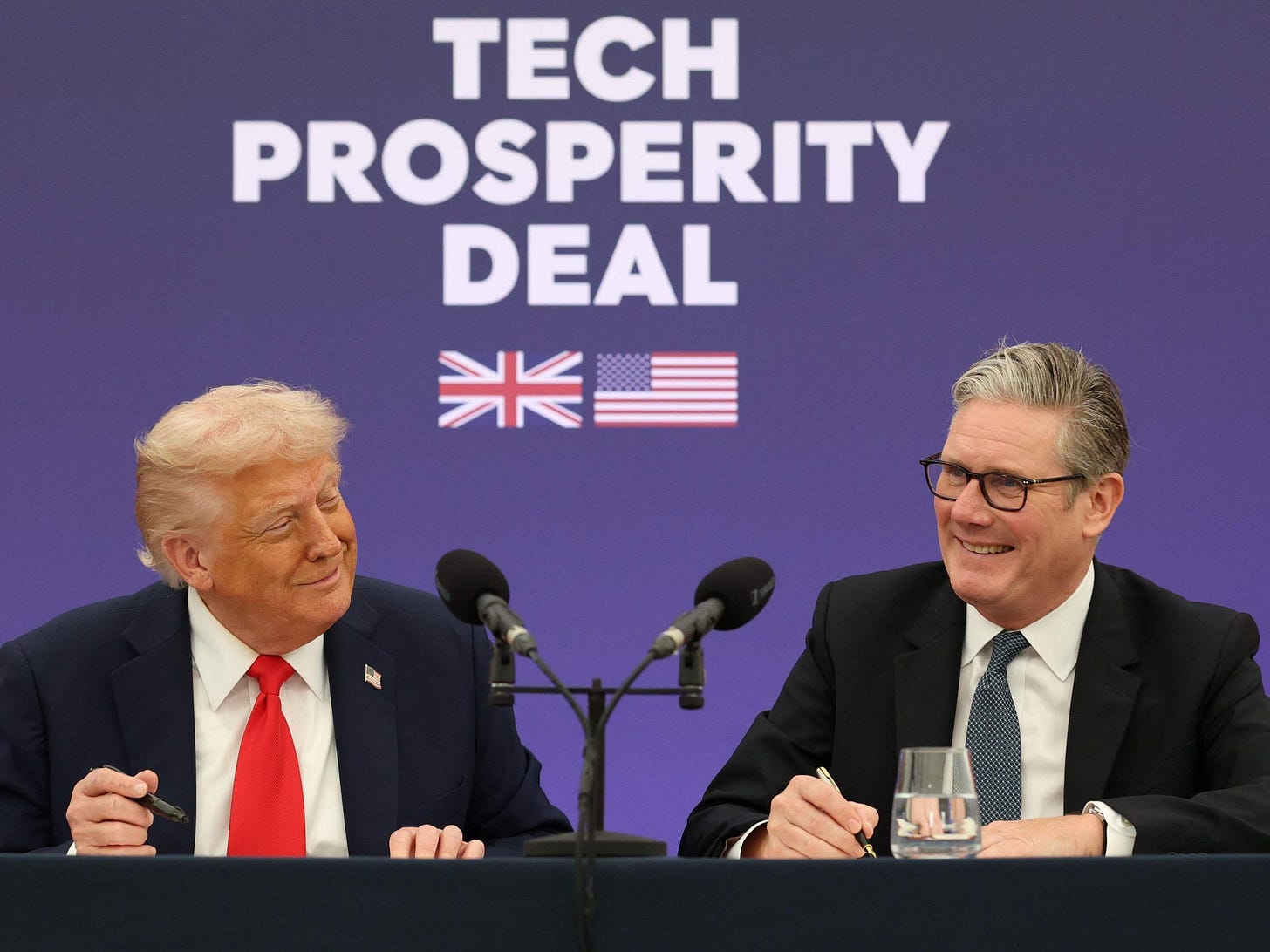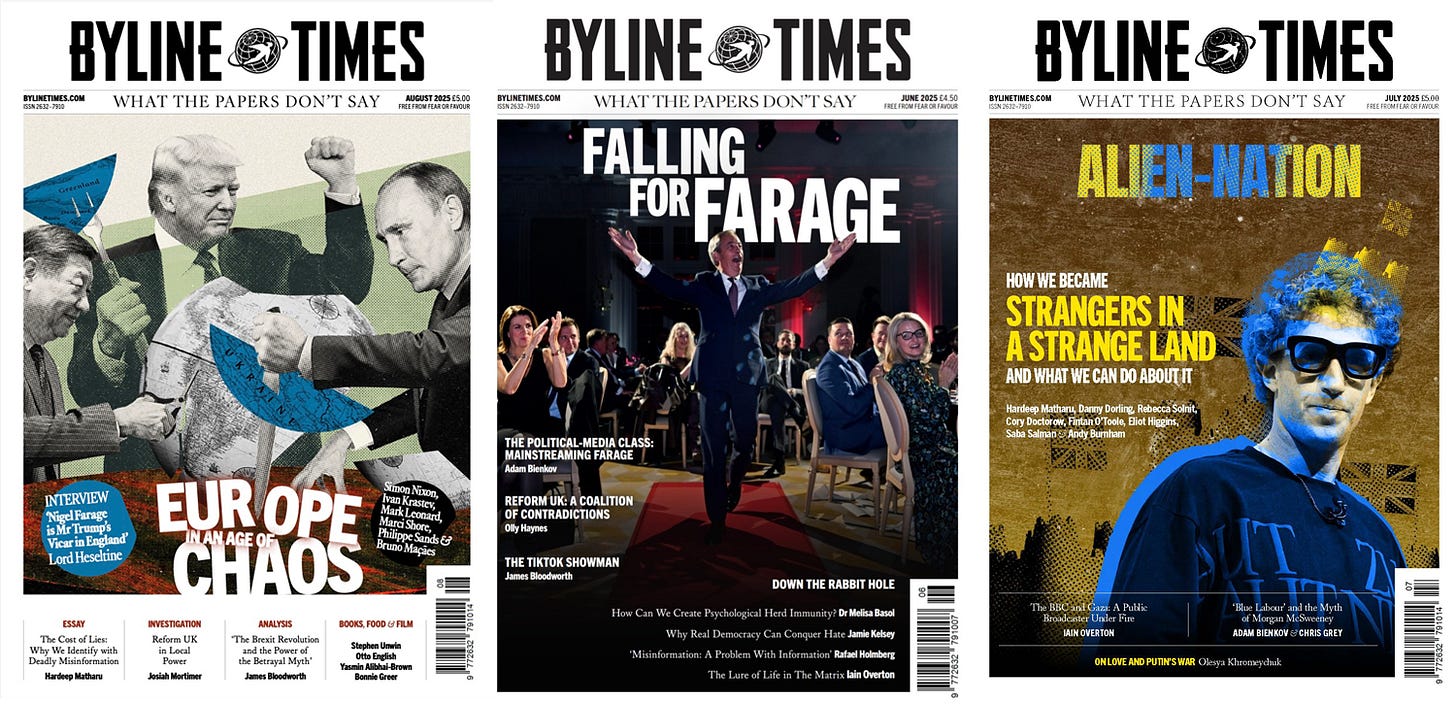'America's Allies in Europe and Asia Are Stuck Between Trump and a Hard Place'
Trump’s Presidency has exposed the weaknesses at the heart of our global security alliances, argues Alexandra Hall Hall

Following the disturbing pictures of Indian Prime Minister Modi, leader of the world’s biggest democracy, chumming it up with authoritarian leaders Chinese Premier Xi and Russian President Putin at the Shanghai Cooperation Organisation Summit in Tianjin, China, in late August, one political wag in the US joked that it could have been worse: “Donald Trump could have been there as well!”
More serious commentators worried that the gathering of the trio, representing three of the world’s nuclear powers, and almost half the world’s population, was deliberately intended as a message – that the US-led world order was no longer the only show in town, and that they were determined not to be pushed around by the West.
In the US, national security experts interpreted Modi’s warm embrace of Xi and Putin as a deliberate display of displeasure over Trump’s decision to impose hefty tariffs on India over its continued purchase of Russian oil, and Trump’s clumsy handling of the military flare-up in May between India and Pakistan.

India has always resented outside efforts to mediate in its longstanding conflict with Pakistan over Kashmir, and rejected Trump’s claims that he had ended the latest clashes by threatening to cut off trade with either party, if they continued fighting.
They also took great offence at Trump’s decision to invite Pakistani army Chief of Staff, Field Marshall Asim Munir, to the White House in June.
According to former National Security advisor John Bolton, this was the first time a Pakistani military leader has been hosted at the White House with no civilian leaders present.
Writing in the Wall Street Journal, Bolton described how Trump’s approach outraged India, because it harked back to the era of a “hyphenated” US India-Pakistan policy, rather than each country being treated on its merits, without reference to the other.
US foreign policy experts worry that Trump’s continued efforts to pressure India to stop buying Russian oil and gas, most recently by lobbying European countries to impose up to 100% tariffs on trade with India, will push India away from the US, into the arms of China, undermining Washington’s biggest strategic goal, which is to contain rising China.
Another example of Indian defiance of Washington came last week, when India decided to send 65 soldiers to take part in the quadrennial Russian-led military exercises with Belarus, known as ZAPAD, in mid-September.
I recently spoke to two national security analysts living in Asia to get their perspective on events. How serious was the rift between the US and India? What was driving US policy in Asia? Following the recent declaration by Trump on a Truth Social post that he would meet Xi at a regional summit in Korea in October, followed by a visit to each other’s country next year, could there even be a bait and switch, whereby the US would abandon its traditional allies, and forge a separate “G2” partnership with China?
Indrani Bagchi, CEO of the Ananta Aspen Centre in India, and former Associate editor of the Times of India, said Indians viewed the second Trump administration with deep dismay.
In his first term, he had taken several welcome steps from their perspective, including raising the level of the Quad (a strategic partnership between the US, India, Japan and Australia) to leader level, imposing tariffs on China, and calling out China’s unfair trading practices. They knew there was a risk of tougher US policies on tariffs and immigration, but all had still seemed well when Modi met Trump in February.
But everything changed following the clashes between India and Pakistan in May. Trump’s claims that he had ended the conflict completely threw India, because India was always intending to end the tit for tat exchanges, and while Vice President Vance and Secretary of State Rubio had engaged with Indian officials, there had been no direct interaction between Trump and Modi.
Trump had failed to treat India as the victim and Pakistan as the aggressor , because India had only taken military action in response to a terrorist attack. Adding insult to injury, Pakistan then became the first country formally to nominate Trump for the Nobel Peace Prize.
Relations “went completely south” after Modi asked Trump to stop taking credit for the ceasefire, and also refused to endorse Trump’s Nobel nomination.
Following the shock of Modi’s public appearance with Xi and Putin at the SCO Summit, there had been some efforts to dial back tensions.
Bagchi described US-India relations as no longer “white hot, though still at a level of simmering discontent.” She also rejected the suggestion that India was making a strategic pivot away from the US.
Nevertheless, Trump’s churlish treatment, alongside his failure to impose tougher sanctions on China for its purchase of Russian oil, had fuelled a sense that India needed to repair its own relations with China, which had been particularly tense following a clash along their disputed border line in 2020, resulting in deaths on both sides.
China had its own difficulties with the US, and also wanted a rapprochement with India. Separately, India and Russia continued to value their relationship, particularly given Russia’s historical role as India’s main defence supplier: “they serve a purpose for us, we serve a purpose for them”. So, all three countries had their reasons for wanting to mount a united front at the Summit.
Bagchi said India’s biggest nightmare was that one day the US and China might make common cause, leaving India “as collateral damage.” She said other US allies in Asia were feeling equally worried, given the mixed signals coming from Washington.
For example, the Pentagon had initiated a review into the AUKUS submarine deal. Top Pentagon officials like Secretary of State Hegseth had started referring to the region as the Asia-Pacific, rather than the Indo-Pacific, which carried the connotation that it centered around China.
Some questioned the US’s commitment to the Quad. South Korea was outraged by the detention of over 300 Korean workers at a Hyundai factory in Georgia. If the US was turning on its allies, it was natural for countries like India to explore other options.
Mike Green, former Senior Director for Asian Affairs in the National Security Council, under President George Bush, and currently CEO of the US Studies Centre in Sydney, Australia, confirmed that there was deep uneasiness amongst Asian allies about American policy towards the region.
US-India relations were at their worst since India’s nuclear test in 1998. Trump’s irritation with Modi was indeed triggered by the latter’s refusal to support his Nobel nomination – a case of “misplaced vanity.”
The allies were also worried about America self-sabotaging under Trump – given the administration’s undermining of research, including in critical sectors such as health, and tech, its attacks on the independence of the Federal Reserve, and the ensuant damage to the credibility of the US dollar.
But, US allies would not break with the US, for the simple reason that “they have no Plan B.” Green cited recent opinion polls in Australia and Japan showing intense public dislike towards Trump, and tanking trust in America, yet continued strong support for the US alliance.
“Nobody likes Trump, but it’s like Biden said – ‘Don’t compare me to the Almighty; compare me to the other guy”.
For them, China was by far the bigger menace, and behaving in an increasingly aggressive manner, modelling military attacks, conducting live fire exercises, and increasing cyber-attacks.
Their anxieties about America did not make them want to distance themselves, but, rather, work harder to preserve the alliance. “They are sober-minded, focused and determined to get through this.” They were also trying to bolster military and intelligence cooperation between themselves, but only to buttress their security, not to replace America.
Green agreed that the news of the upcoming Trump/Xi meetings would add to regional uneasiness. However, he felt that a strong US-China relationship at the expense of America’s Asian allies, was simply not politically or strategically sustainable in the US, where there would be intense opposition, while Beijing would not trust Trump enough to do more than use it for the short term. There would be no permanent change of trajectory.
Ultimately, he was confident that in an actual crisis, America would still come to its allies’ aid. Even if Trump personally was not vested in the relationships, and did not care about arrangements like AUKUS or the Quad, there was deep bipartisan support for them within Congress, and America’s security establishment. This could not easily be brushed aside.
The review of AUKUS reflected Pentagon officials getting ahead of themselves, rather than a systemic change of policy. The US-India relationship would eventually get back on track, because there was no strategic future for India to counterbalance China without it. “There’s no Russia card for India.”
Listening to the two experts speak, I was struck by the similarity of the challenges confronting US allies in Asia, trying to contain the threat from China, and members of the NATO alliance, trying to manage Russia, when they no longer have complete confidence in the solid backing of America.
As in Australia, Japan and Korea, Trump is greatly disliked in countries like France, Germany and the UK. Yet, given their security dependence on the US, they simply cannot afford to alienate him.

Hence the efforts on full display to woo Trump during his state visit to the UK last week. Hence, the obsequious displays of flattery towards Trump at the NATO Summit in June. Hence, the public praise for Trump’s efforts to secure a peace deal in Ukraine, masking private scepticism.
But leaders of all these countries risk a domestic backlash from voters, if they are seen as kowtowing too much to the deeply unpopular President.
Another complication is the way different analysts in the US reach different conclusions about the best way to manage the challenges in Europe and Asia.
For many traditional security experts, any failure to successfully contain Russia in Europe risks emboldening China in Asia. For others, including some officials within this administration, support for Ukraine and the Europeans distracts energy and resources from what they see as the main challenge - containing China.
A third strand of thought within MAGA holds that the US should not get involved in either sphere, but focus on domestic challenges at home. These tensions play out both within the US security establishment, and between America and its allies, fueling uncertainty, and increasing the risk of ruptures or miscalculations.
Trump’s mercurial Presidency has exposed the weakness at the heart of the security alliances in both Europe and Asia. They’ve been too dependent on the US. For now, the allies must keep trying to keep Trump on board, whilst investing far more in their own defence, and praying for a more “normal” President to succeed him.
Unless they are willing to throw their lot in with the authoritarians, there is no easy Plan B allowing them to diversify away from the US.



